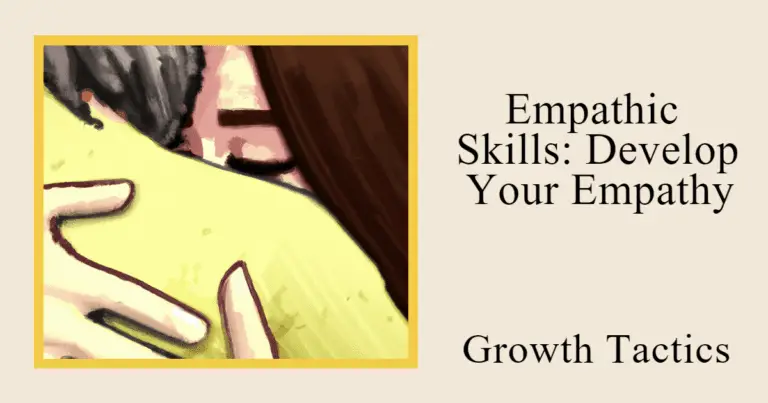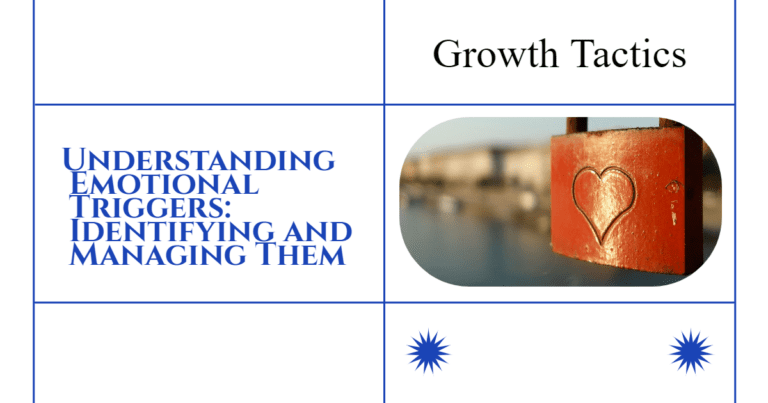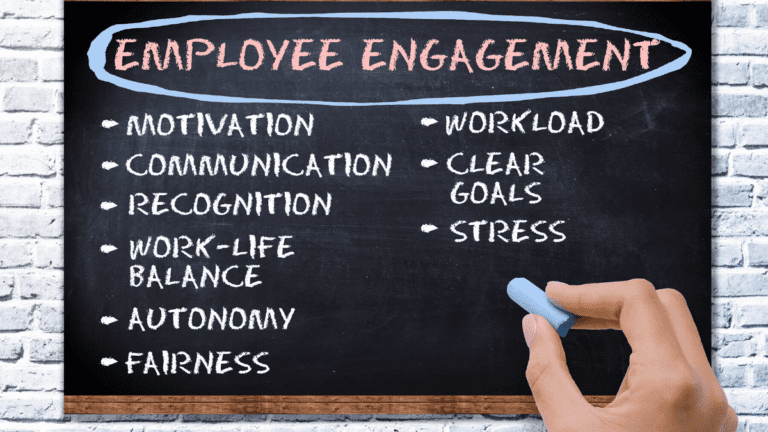Have you ever found yourself focusing so much on the broad view that you miss out on the fine print, or vice versa? I’m a self-proclaimed big picture thinker, always considering the overall goal or concept. But over time, I’ve come to realize that being fixated on only one way of thinking isn’t the secret to success.
The truth is, that blending the ability to see the grand scale with a keen eye for details is where the real magic happens. In this article, we’re going to break down the essence of both big picture and detail-oriented thinking. We’ll explore the strengths and limitations of each. Unveiling strategies for combining them to supercharge your effectiveness, both personally and professionally.
Let’s embark on a journey to balance our visions and the steps we take to achieve them, ensuring we don’t miss the forest for the trees or the trees for the forest.
Jump To Section
Understanding Big Picture Thinking
Big Picture Thinking is like viewing the world from a mountaintop. It’s about broad strokes, overarching goals, and spotting patterns that lead to future outcomes. Big picture thinkers are visionaries; they thrive on possibility and innovation. They are the architects of strategies and the ones who often ask, “What if?” and “Why not?” These thinkers have a natural talent for remaining unfazed by the chaos of the everyday, keeping their focus on long-term objectives. They motivate and inspire, crafting compelling narratives that paint a vision of what could be.
However, being a big picture thinker is not without its challenges. This mindset can sometimes come at the expense of overlooking the finer points. When you’re gazing into the distance, the immediate steps required to get there might become fuzzy. Details can feel like pesky flies, prevalent yet all too easy to swat away. And that’s where potential problems can arise. A lack of precision can lead to errors, disorganization, and plans that, while grand, are not entirely grounded in the practicalities of execution.
So what constitutes the big picture mindset? Here are a few key attributes:
- Strategic Outlook: Big picture thinkers always strategize. They see connections where others might see unrelated points, allowing them to plan several moves ahead.
- Visionary Leadership: These individuals inspire others. Their ability to paint a compelling picture of the future often rallies people behind a cause or a goal.
- Innovative Approach: These thinkers are not afraid to crack the status quo. They often pioneer new projects and seek out uncharted territories.
- Dynamic & Flexible: Big picture thinkers are adaptable. They can shift courses and re-outline strategies when presented with new ideas or shifts in circumstances.
And yet, the question remains: how can we ensure that this aerial view effectively syncs with the groundwork? How does a big picture thinker stay accountable to the minute details that, while small, are the building blocks of their lofty visions?
The Importance of Detail Oriented Thinking
Detail-oriented thinking is akin to examining complex machinery piece by piece, understanding its workings down to the tiniest cog. It’s a mindset that thrives on precision, organization, and meticulous analysis. Detail-oriented thinkers are the editors of the world – they catch the small discrepancies that others overlook, ensuring accuracy, and consistency in any endeavor. Their focus on the immediate aspects of tasks makes them invaluable in implementing strategies and turning broad visions into actionable steps.
These thinkers live in the world of the tangible and measurable. They excel in environments where precision is key, and their ability to stay focused and thorough underlines the backbone of any successful operation. Their approach goes beyond merely spotting errors; it’s about deeply understanding a system or a process, identifying potential improvements and efficiencies, and applying this knowledge to achieve high-quality outcomes.
Yet, like all mindsets, being detail-oriented comes with its own set of challenges. The biggest pitfall? Getting lost in the minutiae. There’s a risk of becoming so absorbed in the details that the overarching goal becomes blurred. It’s the classic case of not seeing the forest for the trees – being so involved in the specifics that one might lose sight of the bigger picture and the ultimate purpose of their efforts.
Key attributes of detail-oriented thinking include:
- Precision and Accuracy: An unwavering commitment to get things right, paying close attention to detail to ensure accuracy in all aspects of their work.
- Analytical Skills: The ability to break down complex problems into manageable parts, analyze data, and draw logical conclusions.
- Organizational Abilities: Detail-oriented thinkers are often highly organized, excelling at creating systems and processes that enhance efficiency and productivity.
- Thoroughness: A meticulous approach to tasks, ensuring that every aspect of a project is explored and nothing is left unfinished or unconsidered.
Understanding the significance of detail orientation lays the groundwork for recognizing the synergy that can be achieved when combined with big picture thinking. It’s the detailed planning and the carefully thought-out steps that bring grand visions to life. The precision of detail-oriented thinking complements the broad, sweeping motives of big picture thinking, weaving together a comprehensive approach that encapsulates both the dream and the pathway to achieve it.
Combining the Best of Both Worlds
Merging the vast landscapes viewed from the mountaintop with the intricate details found in the grains of sand beneath our feet offers a recipe for unparalleled success. It’s about harmonizing the abstract with the concrete, the visionary with the practical. This balanced approach leverages the strengths of both big picture and detail-oriented thinking, forging a path that is both inspired and actionable. Here is how one can integrate the best of both worlds effectively:
Embrace the Power of Diverse Teams
One of the most straightforward methods to balance these perspectives is through team composition. By building teams that include both big picture thinkers and detail-oriented individuals, organizations can ensure that their projects are visionary yet grounded in reality. The dreamers can sketch the outlines of the future, while the doers fill in the colors, bringing the picture to life with their precision and attention to detail.
Cultivate Personal Flexibility
While we may naturally be inclined towards one style of thinking, personal growth lies in our ability to stretch beyond our comfort zones. Cultivating adaptability in thought and action allows us to toggle between macro and micro perspectives as needed. This doesn’t mean abandoning our inherent strengths but rather enhancing them by developing complementary skills. Big picture thinkers can practice focusing on details by breaking down their visions into smaller, manageable tasks. Similarly, detail-oriented individuals can challenge themselves to periodically step back and consider the broader implications of their work.
Develop Communicative Bridges
Effective communication forms the backbone of this integrative approach. Detail-oriented thinkers and big picture thinkers must develop a common language that allows them to share ideas, concerns, and feedback in a way that is mutually understandable. This might involve setting clear goals, timelines, and benchmarks that satisfy the detail-oriented team members’ need for structure, while also aligning with the overarching objectives that motivate big picture thinkers.
Implement Strategic Planning Tools
Leveraging project management and strategic planning tools can help bridge the gap between high-level goals and everyday tasks. These tools can offer a visual representation of how the details fit within the larger vision, making it easier for both types of thinkers to recognize their contributions toward shared objectives. Whether it’s a Gantt chart, a roadmap, or a simple checklist, finding the right tool can transform an abstract idea into a series of actionable steps.
Celebrate Both Contributions
Recognizing and celebrating the contributions of both detail-oriented actions and big picture strategies reinforces their mutual importance. It’s about valuing the dream just as much as the steps taken to reach it. Acknowledging successes, whether they are milestones or completed tasks, encourages a culture that appreciates precision and vision alike.
Integrating big picture thinking with detail-oriented thinking doesn’t mean diluting one to accommodate the other. Instead, it’s about creating a dynamic interplay where each enhances the other, leading to a richer, more productive workflow. This synergy not only propels projects to greater heights but also contributes to more cohesive and adaptive personal and professional growth.
Practical Applications in the Workplace
Incorporating the synergy of big picture and detail-oriented strategies within the workplace can revolutionize how an organization operates. Here’s a short blog section outlining ways to apply these methodologies practically at work:
Aligning Vision with Execution
Every successful company has a vision that propels it forward. However, this vision must be intertwined with practical, day-to-day operations. To achieve this, company leaders should clearly communicate their vision and how each employee’s work contributes to that end goal. It’s important to translate the vision into actionable objectives. Regular meetings and updates can keep this narrative alive, ensuring that every task, however small, is linked back to the larger purpose.
Fine-Tuning Project Management
Effective project management demands both high-level planning and meticulous attention to detail. By using project management software, teams can lay out their overarching project timelines while also managing the minute, iterative tasks that are essential to progress. This kind of software should allow team members to see not just what needs to be done, but also how these tasks fit within the larger picture, thereby providing motivation and context for the minutiae of their work.
Cross-Functional Collaboration
Big picture thinking and detail orientation are often ingrained in different departments. For example, marketing may be more about expansive thinking, while accounting focuses on the details. By encouraging cross-functional collaboration, these different perspectives can be used to challenge and improve upon each department’s strategies. Regular interdepartmental meetings can help break down silos, allowing for a healthier exchange of ideas that ensures both innovation and diligence.
Training Programs
Training programs tailored to both mindsets can foster an adaptable workforce. Workshops that focus on the development of strategic thinking can help detail-oriented employees appreciate the ‘why’ behind their tasks. Conversely, sessions that drill into data analysis or SOP (Standard Operating Procedure) formulation can provide big picture thinkers with an appreciation for the ‘how.’ Thus, employees become more well-rounded and can contribute at multiple levels within the company.
Feedback Loops
Implementing robust feedback mechanisms allows for the continuous refinement of processes and strategies. For the big picture to remain relevant and achievable, it must be revisited and recalibrated when necessary. Similarly, the efficacy of detailed work can be enhanced through feedback. Employees should be encouraged to give and receive constructive feedback regularly, facilitating a culture of constant improvement.
Embracing the Full Spectrum of Thought
As we conclude our exploration, we extend an invitation to you, the reader, to embark on a journey of self-discovery. Pause for a moment and ask yourself – do you naturally gaze at the horizon as a visionary, or do you engage as the meticulous craftsman, absorbed in the elegance of details? Identifying your natural inclination marks the beginning of tapping into the full potential of integrating both approaches into your everyday life.
If you recognize yourself as a big picture thinker, cherish your ability to dream, innovate, and inspire. Your vision for what lies beyond the immediate horizon is not merely a trait but a gift that carries the potential for progress and change. Embrace the grounding force of detail-oriented thought as well. Dive into the details you might usually overlook and understand how they serve as the foundation of your grand visions. By making a habit of engaging with particulars, you make your aspirations stable and achievable.
If, on the other hand, you find joy in parsing through details, celebrate your precision and ability to manage complexities with finesse. Your work lays the groundwork upon which grand ideas take shape. Allow yourself moments to step back from the immediate tasks and consider the broader implications and possibilities of your efforts. Seeing the bigger picture can fill your work with renewed purpose and perspective.
The aim is not to alter your core identity but to expand your range of capabilities. Whether through collaborative projects, personal development, or a simple shift in how you think, blending big picture and detail-oriented thinking into your life enriches your experiences and amplifies your impact in any context.
Thus, as you move forward, challenge yourself to bridge the gap between these two thought modes. Let your mind dance between the macro and the micro, and witness the transformation in both your work and personal life. By marrying these complementary perspectives, you not only dream up castles in the sky but also lay the bricks that construct them, one at a time.








